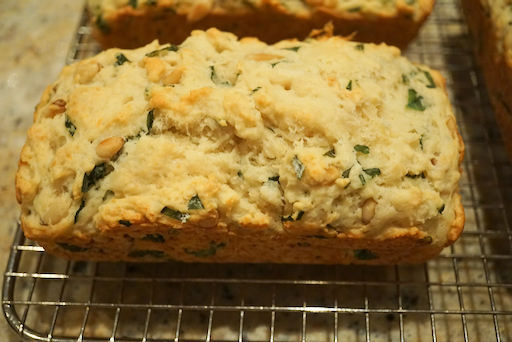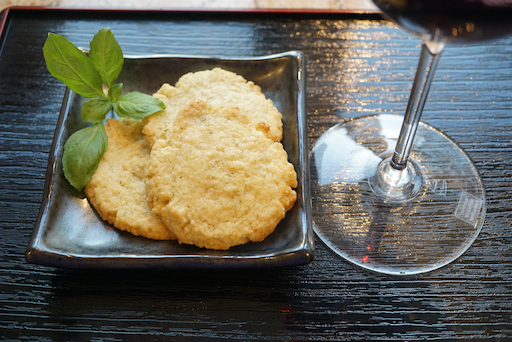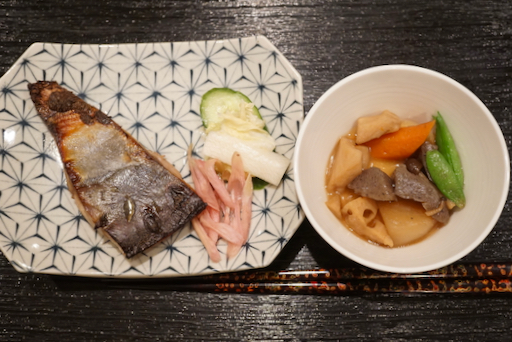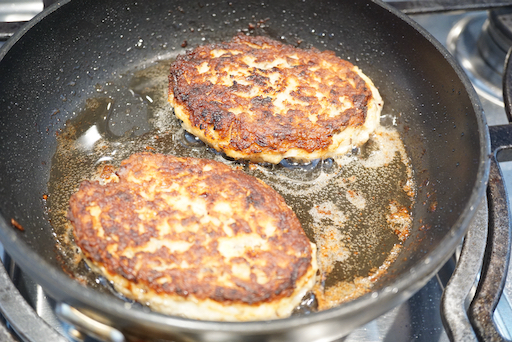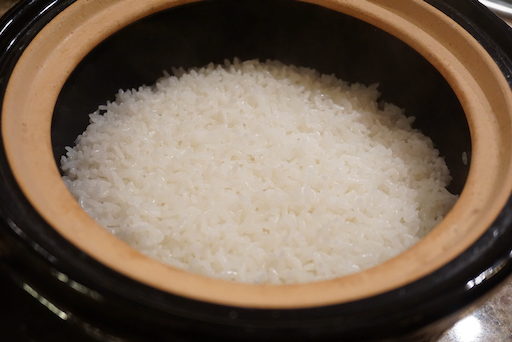Monday, December 14, 2020
Sushi Taro "regular" kaiseki box "普通”の寿司太郎会席弁当
Friday, December 11, 2020
Basil and pine nuts quick bread バジルと松の実の速成パン
My wife made this quick bread as an effort to use more of the basil we are growing in our windowsill herb garden. In addition to the basil, it has pine nuts and parmesan cheese. So it is a kind-of disaggregated “pesto” bread. This is a savory quick bread which is good for breakfast or even as an hors d’oeuvre with wine.

Tuesday, December 8, 2020
Lemon basil shortbread cookie レモンバジルクッキー
We had this with DAOU Vineyards Pessimist Red Blend 2018 which is Petit syrah based. Our recent favorite/house wine.
Ingredients: (18 cookies)
1 cup AP flour
1/2 cup sugar
1/2 cup unsalted butter, cold, cut into pieces
2 tbs sliced basil (or more to taste)
grated zest from one lemon
1/4 tsp kosher salt
Directions:
Preheat oven to 375F
Line cookie sheet with parchment paper
Add all ingredients to the food processor and mix (#1)
Using a small ice cream scoop, portion out the dough (#2)
Bake 7-8 minutes at 375F (#4)
Let cool on a cooling rack
The lemon flavors come through strongly contrasts nicely with the sweetness and is pleasantly refreshing. After one day in the refrigerator, the basil flavor began to surface more strongly. Somehow this cookie went well with the red wine we were having. My wife has made quite a good variety of savory cookies. This is another good one.
Saturday, December 5, 2020
Renkon salad 蓮根サラダ
Ingredients: (amounts are all arbitrary)
Fresh renkon, skinned and cut into wedge-shaped bite-size chunks (called “rangeri” 乱切りby cutting on bias, turn 45 degree again cutting on bias.
Boil it in water with a splash of rice vinegar for 10 minutes, drain and let cool.
Blanched broccoli floret and skinned Campari tomato.
Dressing:
1tbs Hellman’s mayonnaise
1 tsp of Yuzu juice (from the bottle)
This dressing tastes really similar to the commercial Yuzu mayonnaise we bought recently. This combination of vegetables works well—the nice crunchy texture of renkon and slightly less crunchy broccoli.
Wednesday, December 2, 2020
Renkon balls レンコンまんじゅう
This dish is the result of an unexpected “silver lining” derived from the Covid epidemic. Because of Covid, we decided as a safety precaution, not to go to the grocery store but rather have groceries delivered. This forced us out of our usual routines and by necessity introduced us to new options. One of which was buying groceries from HMart Korean grocery store via the Instacart. As a benefit, we are now getting items which were not available from our usual grocery stores. One such item is fresh “reckon” 蓮根 or lotus root. (It is the floating stalk, not the root of a water lily). Even at our Japanese grocery store, the only reckon we could get was cleaned, boiled and sold in a package. It is easier to use than fresh renkon but it limits the dishes that can be made from it. For example, I could not have made this renkon ball or dumpling dish レンコンまんじゅう shown below from packaged prepared renkon. But with fresh renkon available I could. I served the dumplings in a very gentle broth, with garnishes of edamame 枝豆, and simply fried reckon slices.
Instructions for the renkon balls
Ingredients:
One segment of fresh renkon (#1) (after grated, #4, it was slightly more than 700grams)
2 tbs potato starch
3 large shrimp, thawed, shell removed and cut into small chunks then salted
10-15 shelled edamame
For broth
1 cup kelp and bonito broth (I used a dashi pack)
1 tbs of white dashi “shirt-dashi” 白だし seasoning or 1tbs each mirin and light colored soy sauce (or to taste).
Directions:
One segment of fresh renkon (#1).
Remove the ends of the segment of renkon and peel the skin (#2 and #3)
Finely grate the renkon and drain to remove excess moisture (#4)
Mix in the corn starch, shrimp and edamame. Make small balls about one inch in diameter.
Deep fry at 300-320 F for 7-10 minutes (#5)
Drain (#6)
Assembly:
I cut one renkon ball in half and placed the halves in a bowl. I added the fried renkon and edamame and poured in the hot broth. You can also reheat everything in the broth and serve.
This is a very good dish. The contrast of elastic texture of the renkon balls and crunchy fried renkon is wonderful. The shrimp has similar texture to the renkon ball and since it was salted, it imparts briny salty burst of flavors. I made the broth very gentle and light which also went well.
Sunday, November 29, 2020
Yellowtail marinaded in sake lee ハマチの粕漬け
This was the last of the whole fresh yellowtail. I marinated the filet in sake lee 酒粕 or "Kasu-zuke" 粕漬け. Since I did not have a time to cook this during the week, the fish marinated for a week which was a bit too long. I also made Japanese stewed vegetable "nituske" 煮付け as a side.

Ingredients:
Sake lee 300grams
Red miso 30grams
Sugar 3 tbs
Salt 1/2 tsp
Sake to loosen up the marinade if too stiff,
Directions:
I added half of the sake lee mixture in the bottom of a sealable container and placed cheese cloth (after washing to remove any lint). I put in the filets and then covered them with another layer of cheese cloth. I put the remaining sake lee mixture on top. I let it marinate in the refrigerator (for a week as it turned out).
This was a bit over-marinated. I started broiling on the flesh side first as shown below in the toaster oven.
Thursday, November 26, 2020
Yellowtail burger はまちバーガー
I was trying to use all parts of the whole yellowtail I got from Hmart through Instacart. I scraped off all the meat from the bone as well as the meat close to the end of the tail. I minced it but the amount was not enough to make a substantial dish. So I decided to make a yellowtail burger. As a binder and to make the "meat" go further I added “hanpen ” はんぺん. It is steamed Japanese fish cake made of white fish meat and egg white and came pre-made in a package. I served the resulting burger as a lunch with leftover shiitake mushroom risotto, sautéed pencil asparagus and scrambled egg with tomato.

Ingredients:
Yellowfin meat scraped off from the bone and the end of the tail, finely minced (I am not sure how much this was but probably less than 200 grams)
1/3 hanpen, thawed, cut into small cubes
1/2 egg, beaten
2 shiitake mushroom, both stalks and caps finely chopped
1 tsp of red miso
1/2 tsp mirin
Pinch of salt
Vegetable oil for cooking
Directions:
In a plastic cylinder (which came with the emersion blender), add the hanpen and the egg. Using the emersion blender make a smooth mixture. Add the miso and the seasoning and blend. Add the yellowtail meat and mix with a silicon spatula. Dump the mixture on a lightly oiled plate, divide in half and form two oval disks, half inch thick. In a non-stick fry pan, on medium-low heat add the oil and slide in the disks. I cooked one side about 5 minutes and turned the burger over and cooked another 3-4 minutes until done.
This was rather gentle tasting and tender fish burger. The miso flavor really made it. This was nice light lunch.
Monday, November 23, 2020
Simmered yellowtail head ハマチの兜煮
For many non-Japanese (and even for some Japanese I suppose), this may not look attractive but stewed fish head is a classic Japanese dish and does have a quite good amount of meat to enjoy. Even my wife likes stewed fish heads. I made this from the yellowtail fish I bought recently from Hmart and was part of my effort to make sure none of the fish went to waste. The classic fish used for this dish is perch or “Tai” 鯛. I have made this using salmon head which was very good. This yellowtail head was not very big (I should not have removed the collar or “kama” which I froze for later use. It would have added more meat). I simmered the head in seasoned broth with daikon.
Ingredients: (for two servings)
One yellowtail head, cut into two lengthwise (requires a heavy chef’s knife)
Daikon, peeled and cut into 4 one inch thick rounds
Ginger, 4-5 slices
100ml sake
100ml water
2tbs mirin
2tbs soy sauce
1 tsp sugar
Directions:
Place the two halves of the fish head in a sauce pan (they should fit snuggly).
Add the sake and water and simmer for 10-15 minutes with folded aluminum foil as an inner lid or “otoshi-buta” until cooked through.
I served the fish heads with daikon and added sugar snaps cooked in salt broth スナップ豌豆の塩びたし. This was quite good. The seasoned broth was a flavorful part of the serving as were the daikon which absorbed the flavor or the broth and were nice and tender. The fish cheek meat, as is the case with other meat sources such as beef or pork was the best part of the stew. Next time I will not remove the collars since they would have provided a bit more meat.
Friday, November 20, 2020
Shelled ginko nuts 殻付き銀杏
Tuesday, November 17, 2020
Two premium types of Japanese rice from "The rice factory" 北海道ななつぼしと富山県コシヒカリ
Saturday, November 14, 2020
Grilled yellowtail filet ハマチの塩焼き
Choosing among the whole fresh fish available from HMart Korean grocery store, we tried "yellowtail" this time. The Japanese name may be "hamachi" ハマチ but the Japanese name changes as this fish grows. If the fish is over 80 cm, it is called "Buri" ブリ which appears to be the uniform nomenclature throughout Japan. The younger, smaller yellowtail, however, has many different names depending on the locale. The one we got may have qualified as a small "hamachi". Of course, the best way to enjoy hamachi is as sashimi, but this one was not fresh enough for that. So, after I cleaned the fish I made what is known in Japanese as sannmai-oroshi 三枚おろし or “three layers” which consist of two filets and a central layer of bone with bits of meat still attached between the bones. I cut one of the filets into serving size, salted it and let it stand in the refrigerator for several hours. I blotted the surface with paper towel, re-salted and cooked it. It would have been best grilled over a charcoal fire but I simply cooked it in a frying pan with a small amount of olive oil. I served it with salted vegetables 浅漬け (Cucumber, nappa cabbage, thick rectangles of daikon), myoga in sweet vinegar 冥加の甘酢漬け and blanched broccoli. I found that we had a chopstick rest shaped like myoga so in keeping with the theme included it for the chopsticks on the tray. This dish was quite good with cold sake.
I cut the two filets into small serving size. I cooked one of the filets as shown here. I marinated the other filet in sake lee ハマチの酒粕味噌漬け. I simmered the heads as "Kabuto-ni" 兜煮, and the collars or "Kama" カマ were frozen for later. I also scraped off all the meat from the bone and also removed the meat from skin of the tail portions and used it to make a yellowtail burger ハマチバーガー (all the subjects of future posts). So every part of the fish, except the bones and fins was used— nothing was waste. In so doing I hope we did justice to what this lovely fish had to offer.
Wednesday, November 11, 2020
Banana carrot muffin バナナニンジンマフィン
This is another muffin my wife made. We thought it was a bit unusual since it uses grated fresh carrot and banana. My wife got this recipe from her sister. It came from “Wild about muffins” by Angel Clubb. Although we do not know the published date, this book appears old. After just a quick search on the internet, however, it appears that there are quite a few muffin recipes using bananas and carrots. So, apparently, although we have not heard of it before, this is not such an unusual combination.

Ingredients: (Makes 12 muffins)
Sunday, November 8, 2020
Chocolate vanilla panna cotta チョコレート、バニラ パンナコッタ
Ingredients:
1 tsp. gelatin
3 Tbs. water
3/4 cup 4% milk
3/4 cup cream
1/4 cup sugar
for flavoring:
1/2 tsp vanilla
3 Tbs. cocoa powder
Directions:
Bloom the gelatin in the water and set it aside for a few minutes. Add the milk, cream and sugar to a sauce pan and heat gently until the sugar melts (don't boil). Take a ladle of the warm milk mixture and add to the gelatin mixture until the gelatin is completely melted into the milk. Add the melted gelatin into the rest of the milk mixture. Divide the milk mixture in half. Add the vanilla to one of the halves. Pour into a glass container that has been tipped on its side. See picture below.

Thursday, November 5, 2020
Cream cheese and chive with white bread muffin
I will turn the next part over to her
Ingredients
1/2 cup milk
3 Tbs. sugar
2 tsp. salt
3 Tbs. butter
2 packages yeast
1 1/2 cup warm water
4 -6 cups bread flour
for the filling:
1 tub of Philadelphia cream cheese with chive
Directions:
Combine the milk, sugar, salt and butter in a sauce pan and heat up until the milk is scalded and the other ingredients have melted or dissolved. Add the water and let the mixture cool. Add 4 cups of bread flour and yeast to a stand mixer. When the milk mixture has cooled add it to the flour while stirring on speed 2 with the bread hook. Add more flour as needed to make a smooth workable dough. Put dough in a bowl and coat the surface with vegetable oil to keep it from drying out. Let rise until doubled.
Form the muffins by punching down the dough. I weighed the dough and decided to make muffins weighing 2 1/4 or 63.78 grams. With this dough I got 20 muffins. I then used a small ice cream scoop for the cream cheese and made 20 balls weighing about 11 grams. I folded the dough over the individual cheese balls and placed the muffins in a heavily greased pyrex baking dish. I baked them at 400 degrees for 18- 20 minutes or until they sounded hollow when tapped.
These muffins were pretty good. As usual an air space developed above the cheese. I fully expected the cheese would melt into the bread but was surprised to find it sitting there about the same consistency as when I put it in the dough. (Made me wonder what the cream cheese was actually made of). The bread was good as always and the cream cheese flavor was very pronounced. But I have to say in all honesty the easiest thing to do in the future if we want this flavor combination is just to make the muffins and smear the cheese on with a butter knife.
Monday, November 2, 2020
Baguette bake in ceramic baker version 4
Here is the summary of tips for using the Emil-Henry ceramic baguette baker.
1. The total amount of flour is 3 cups. In our case we used a biga starter (1 cup bread flour, 1 cup buttermilk and 1/8 tsp instant yeast, let it ferment overnight). I added 2 cups more of bread flour). This time I had to add a bit more water.
2. Baked 25 minutes450F with lid on and an additional 10 minutes with the lid off. The additional 5 minutes of baking without the lid on made the crust more brown and harder. The harder crust appeared to help in removing he baguette without breaking the crust.
3. Let it cool down before removing the baguette.
4. As suggested by a friend, I dusted the baker with cornmeal. I am not sure whether this helped or not. The cornmeal did not stay in the area that stuck the most since the baguettes are not flat.
In any case, we had the best baguette so far without a broken crust. Because of the slightly longer baking time, the crust was browner and a bit harder than in the previous tries. Nonetheless it tasted really good and the crust was just nicely crunchy not too thick or hard. They should have included better instructions with the baker. It should not be this difficult but, in the end, you cannot beat the crust this baker produces
Friday, October 30, 2020
Grilled bluefish and matsutake lunch
We used to get a whole fresh Spanish mackerel at Whole foods, but it has not been available for a long time. Since we started buying groceries from the Korean grocery store HMart through Instacart, we have found they have more variety of whole fresh fish available. We got whole Spanish mackerel from them a few times. This time, however, mackerel was not available but bluefish was. We have used bluefish* in place of Spanish mackerel in the past and decided to go with it. I am not sure how I ordered it (by weight or by the numbers) but I ended up with two rather large bluefish not cleaned at all. So, I had to scale, gut, remove head and make filets. It was a bit of work but the fish was really fresh. As before, I made bluefish simmered in miso sauce ブルーフィシュの味噌煮 from the filets and "tsumire" fish balls soup つみれ汁 from the fish meat scraped off the bones. I set the fish ball soup and miso simmered fish aside for another meal. The remaining filets, I salted and grilled. We happened to have matsutake 松茸 from Oregon mushroom and matsutake rice 松茸ご飯 rice leftover from dinner the previous night. So I made matsutake soup 松茸のお吸い物, warmed up the rice and served with the bluefish for our lunch on Sunday.
* I am not sure of its Japanese name but it appears to be "Oki-suzuki" オキスズキ. I have not seen or eaten it while I lived in Japan.
I first salted the fillet and let it sit in the refrigerator for a few hours. I cooked the bluefish filet with a small amount of olive oil in a frying pan on low flame with skin side down until the skin got brown (6-7 minutes, I also applied decorative cuts on the skin to prevent the skin breaking during the cooking). I cooked 80% on the skin side, flipped it and completed the cooking. I served this with pickled myoga 冥加の甘酢漬け, salt picked cucumber and nappa cabbage きゅうりと白菜の浅漬け and thinly sliced cucumber dressed in sushi vinegar 胡瓜の酢の物. Since the fish was well-salted, we did not need additional sauce such as soy sauce for this.
For the matsutake soup 松茸のお吸い物, I made bonito "dashi" カツオの出汁 from a dash pack seasoned with mirin and light colored soy sauce and salt, added thinly sliced matsutake, silken tofu, "kyoubu" 京麩 decorative gluten cake (dried, hydrate before adding to the soup), freeze dried "mitsuba" 三つ葉 and yuzu zest ゆず (frozen).
The bluefish prepared this way was very good. The flesh was pleasingly oily, soft and had a nice flavor. The skin did not get crispy but stayed soft. It may have been a bit strong tasting fish to accompany the delicate matsutake but we really enjoyed this lunch.







